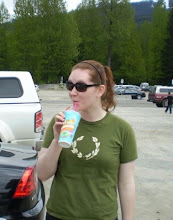Public spaces are usually considered to be places that large numbers of people occupy and carry out their business and other interactions in an "acceptable", considerate manor. Private spaces are usually spaces that involve privacy, intimacy, comfort, sense of freedom and liberation, etc. Public spaces (such as the workplace) continue to be viewed as masculine spaces, while private spaces (such as the home) are still seen as the female's domain (i.e., the "domestic sphere"). But what happens when something occurs to violate or damage such a private space? What happens when someone brings something otherwise considered "private" into the public? And what do we do when groups of individuals are visibly and notably excluded from certain spaces based upon their gender, sexuality, or race (as women and other minority groups often are)?

We were assigned collages as part of our course requirement, and I created a collage that represented both Nancy Duncan's article (previously mentioned) and Daphne Spain's article "Space and Status". The collage involves an interpretation of public and private spaces, as well as the exclusion that many women face on a daily basis from many public spaces throughout the world. I have included a photo of my collage for you to see yourself, to make your own judgements and interpretations of what public vs. private space and exclusion from space means to you.
 So, my friend Kerrilynn just came over to show me her video that she made for our Women's Studies 211 class (the same class that I created this blog for), and it was amazing! She deals with so many issues of gendered spaces in our society, as well as how individuals interact with particular spaces depending on their gender (sound familiar?). One particular segment of her video really resonated with me, and I thought that I would share it on my blog as it relates to what I've been talking about in the last few posts (interactions with space differing depending on one's experience of gender).
So, my friend Kerrilynn just came over to show me her video that she made for our Women's Studies 211 class (the same class that I created this blog for), and it was amazing! She deals with so many issues of gendered spaces in our society, as well as how individuals interact with particular spaces depending on their gender (sound familiar?). One particular segment of her video really resonated with me, and I thought that I would share it on my blog as it relates to what I've been talking about in the last few posts (interactions with space differing depending on one's experience of gender). 
